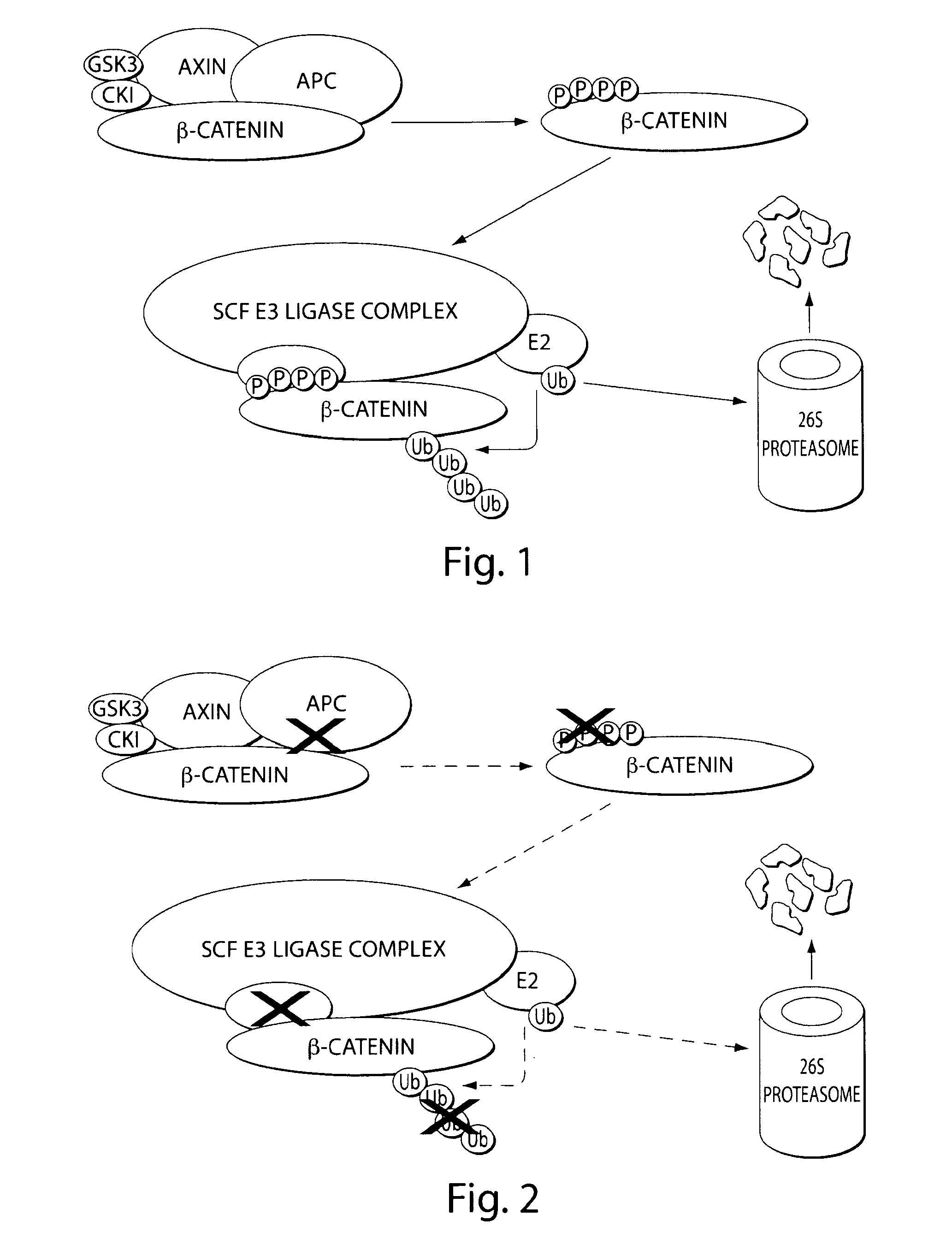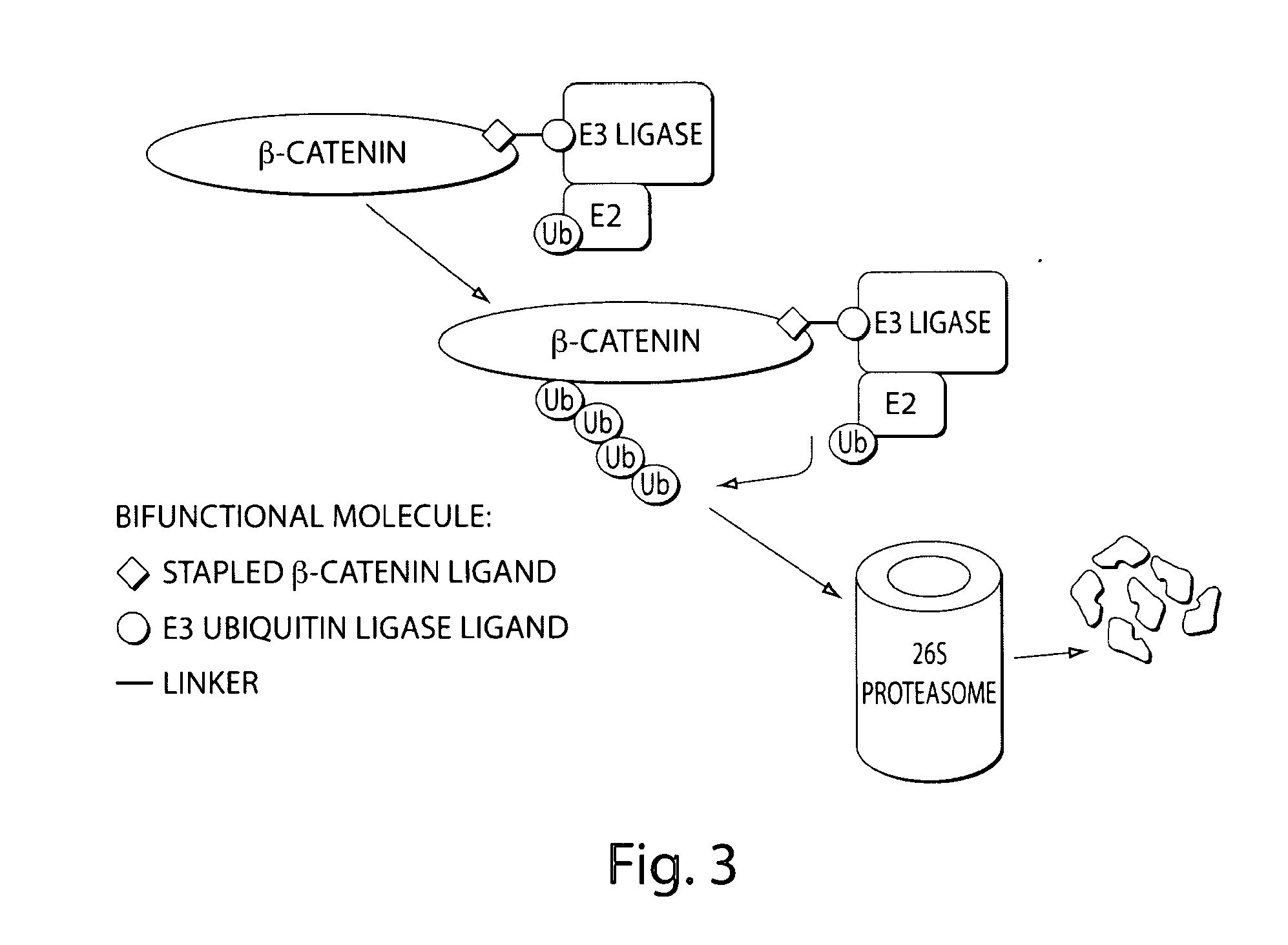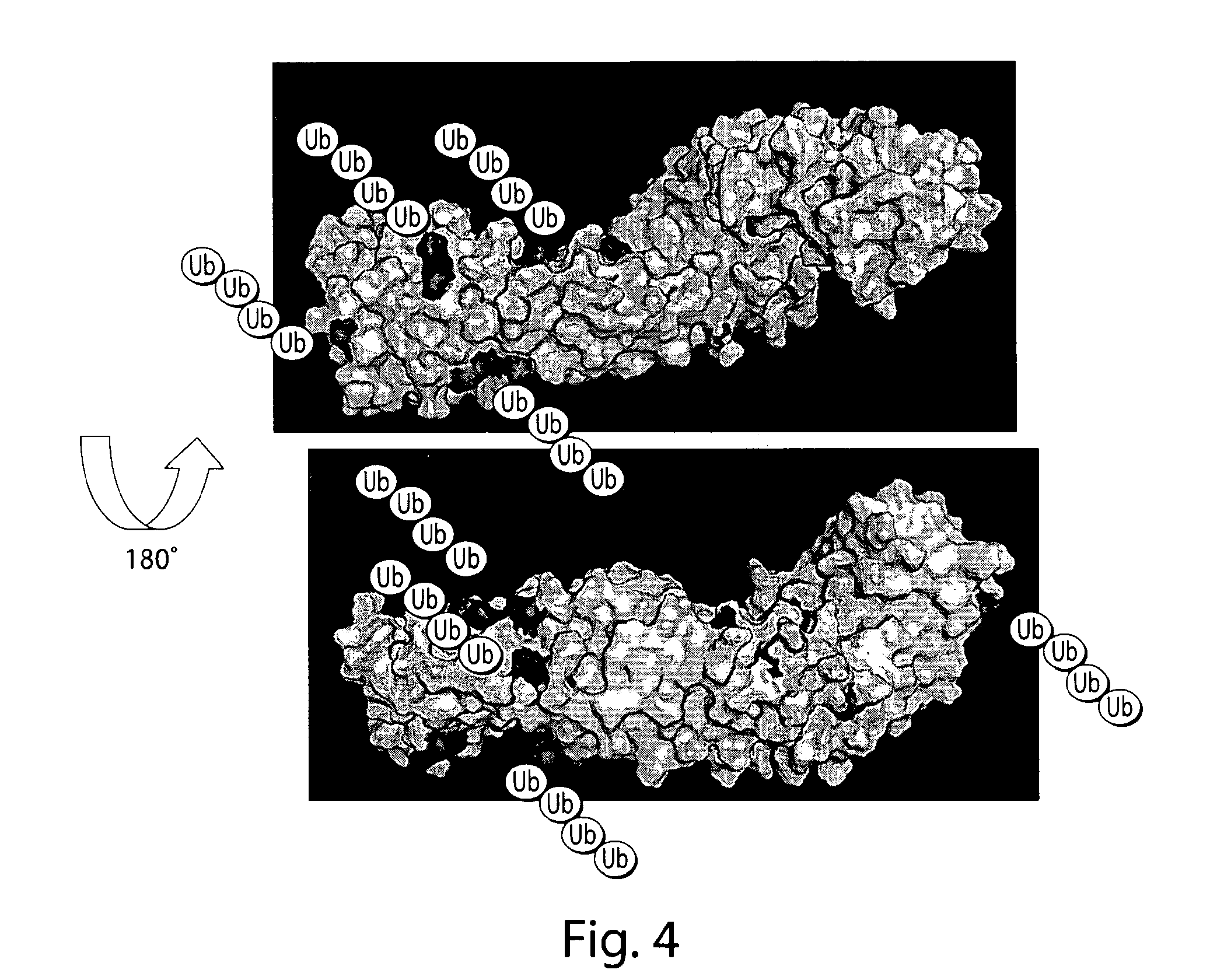Bifunctional stapled polypeptides and uses thereof
- Summary
- Abstract
- Description
- Claims
- Application Information
AI Technical Summary
Benefits of technology
Problems solved by technology
Method used
Image
Examples
example 1
Bifunctional Stapled Peptide for Degradation of β-Catenin
[0346]β-catenin is an essential component of the Wnt signaling pathway. The canonical Wnt pathway plays critical roles in embryonic development, stem cell growth, and tumorigenesis. Stimulation of the Wnt pathway leads to the association of O-catenin with Tcf and BCL9 in the nucleus, resulting in the transactivation of Wnt target genes. The level of β-catenin in the cytosol is regulated by β-catenin destruction complex. In the absence of a Wnt signal, β-catenin is phosphorylated, leading to its ubiquitination by the SCF E3 ubiquitin ligase complex and subsequent degradation by the 26S proteasome (FIG. 1). In the presence of a Wnt signal, the destruction complex is inhibited and cytosolic levels of β-catenin rise, allowing its translocation to the nucleus where β-catenin interacts with Tcf and other transcription factors to activate target genes. Genetic aberrations in components of this pathway are associated with a variety of...
example 2
Screening Procedures to Obtain High Affinity Targeting and Effector Domains
[0354]Bifunctional stapled peptides are screened for high affinity binding using various approaches:
[0355]1) Synthetic libraries of stapled peptides: The purpose of such a screening is the identification of stapled peptide sequences capable of binding to a specific protein. Libraries are constructed by split-pool synthesis. The peptide sequences is synthesized on bead (split and pool) and is composed of a constant subunit (such as p53, TCF4, or Axin derived stapled peptides) and of a variable subunit (FIG. 15). The variable subunit can be designed based on i,i+4 and i,i+7 architecture (X=random amino acid), e.g.:
i,i+4: XXX—S5—XXS—S5—XX 1
i,i+7: XXX—R8—XXSSXX—S5 2
[0356]A combinatorial library analogue to sequence 2 was assembled. For X a reduced set of 10 amino acids was chosen (R, Q, F, L, A, W, V, S, H, Y). The assembled sequences were determined by Edman degradation. Dye-labeled target proteins are screene...
example 3
Axin-Derived Stapled α-Helices for Use in Bifunctional Peptides
[0359]Additional variant bifunctional peptides are synthesized:
(SEQ ID NO: 23)SAH p53-8-DELISFKDEGEQE(β-Ala)2ERDLS5DVKS5SLVNCTcf-4: Kd ~100 nM, as in Example 1. Axin-derived stapled α-helices are used SEQ ID NO: 25, Kd ~3 μM).(ENPESILDEHVQRVMR,(SEQ ID NO: 26)SAH p53-8-NPE-S5-ILD-S5-HVQRVMR(SEQ ID NO: 27)SAH p53-8-NPESILD-S5-HVQ-S5-VMR(SEQ ID NO: 28)SAH p53-8-NPE-R8-ILDEHV-R5-RVMR
[0360]Affinity is increased as compared to the non-stapled wild type sequence SEQ ID NO: 25 (Kd˜3 μM). In addition these shorter all-helical peptides exhibit higher cell permeability than the TCF4 derived sequences, which consist of a helical and an unstructured subunit.
PUM
| Property | Measurement | Unit |
|---|---|---|
| Fraction | aaaaa | aaaaa |
| Acidity | aaaaa | aaaaa |
Abstract
Description
Claims
Application Information
 Login to View More
Login to View More - R&D
- Intellectual Property
- Life Sciences
- Materials
- Tech Scout
- Unparalleled Data Quality
- Higher Quality Content
- 60% Fewer Hallucinations
Browse by: Latest US Patents, China's latest patents, Technical Efficacy Thesaurus, Application Domain, Technology Topic, Popular Technical Reports.
© 2025 PatSnap. All rights reserved.Legal|Privacy policy|Modern Slavery Act Transparency Statement|Sitemap|About US| Contact US: help@patsnap.com



